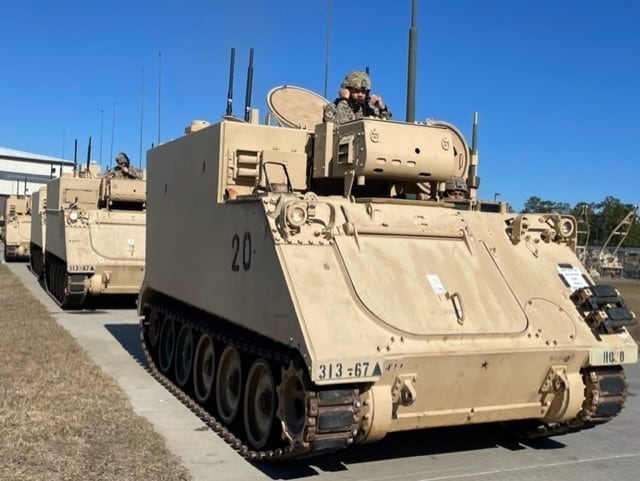On the modern battlefield, where threats morph at an astonishing pace, the U.S. Army is advancing its capabilities through digital engineering, using it to infuse vitality into antiquated systems, sculpt state-of-the-art prototypes and seamlessly incorporate emerging technology to power modernization and maintain a competitive edge against near-peer adversaries.
Put simply, DE has assumed a central role in Army innovation, helping propel the operating forces into a new era of readiness.
Three industry-proven accelerators in particular are driving DE advancement and enable aspects of the four necessities — simplicity, intuitiveness, low signature and continuous iteration — referenced by Army leadership in a recent article. Let’s explore each accelerator and how DE is shaping the present and future of capabilities and warfare.
Accelerator One: Rapid design to prototype
The concept of expediting design-to-prototype processes is deeply ingrained in various commercial sectors such as Formula 1 racing cars, aviation and architectural design. Within the military, the adoption of this technology is revolutionizing the way design reviews are conducted, ushering in a digital-first paradigm.Consider the Army’s adept use of DE in the development and prototyping of unmanned aerial systems.
This approach significantly accelerates the creation of reconnaissance and surveillance drones crucial for battlefield situational awareness. Similarly, it finds application in the evolution of next-generation combat vehicles and soldier gear and equipment. Utilizing digital modeling, these systems are meticulously simulated and refined, resulting in optimized designs and a substantial reduction in the time required to transition from design concepts to functional prototypes. In many cases, these efforts slash the time it takes to bring innovations to market by an astonishing 50 percent, or more.
Systems in the land domain are also leveraging digital engineering and modular open systems approaches which allow for insertion of technology, such as hybrid electric propulsion and advanced C5ISR systems. We have seen examples of moving from a clean-sheet design to actual prototype through operational testing in a mere 23 months, showcasing the ability of DE to move projects from conceptual design to production ready design at a record pace.
The small investment in digital design upfront is only the beginning and pays exponential dividends months and years later by creating more flexibility throughout the systems life-cycle.
Accelerator Two: Emerging technology integration
Digital twins, reverse engineering and the implementation of artificial intelligence are part of an indispensable DE arsenal capable of integrating advanced technologies into legacy systems. These multifaceted tools not only streamline processes but also elevate the effectiveness and reliability of pivotal military assets.
Take the Army’s Future Vehicle Lift portfolio — a striking embodiment of how digital engineering can reshape the landscape of military vehicle development. Through intricate simulations and rigorous testing, the FVL initiative explored a myriad of configurations and materials, ensuring that it met stringent reliability and performance benchmarks. This proactive approach not only expedites the development cycle but also acts as a proactive safeguard against potential issues, reinforcing the Army’s agility to evolve with operational demands. This integration extends to the realm of maintenance and sustainment, with digital twins playing a pivotal role in predicting maintenance requirements and prolonging the operational life of equipment.
By creating precise virtual replicas of real-world assets, maintenance needs are forecasted and addressed with pinpoint accuracy, substantially curtailing costly downtime and ensuring peak operational readiness. This holistic fusion of digital technologies bolsters operational efficiency while enhancing the Army’s ability to maintain a robust and adaptable force posture, ready to respond to evolving threats.
By leveraging modeling and simulation along with AI within a model based product sustainment approach, we can increase operational availability by at least 20 percent and reduce sustainment costs by 30 percent.
Accelerator Three: Increase warfighter touchpoints
The dramatic increase of warfighter touchpoints, driven by the strategic convergence of a model-based approach and hands-on experimentation, enables a desired and profound shift in the way the Army approaches capability development. The multifaceted strategy not only revolves around meeting known requirements but also actively encourages experimentation with future operational concepts.
Advancements in technology allow for more robust experimentations at faster speed and with broader distribution. A broader array of high and low fidelity simulators are an excellent example of this concept. Soldiers can rapidly receive the most current and true-to-life training on advanced technologies, allowing them to train with cutting-edge tools that mimic real-world conditions and enhance preparedness. Additionally, they inform concepts of operations before systems reach prototype stage.
This approach also allows for the customization of systems to specific mission requirements, tailoring equipment to the precise needs of different units. The adaptability is instrumental in enhancing the overall effectiveness and readiness of Army units, ensuring that they are equipped to handle a variety of scenarios and challenges with precision. The rapid experimentation cycle paired with modular architectures and digital designs creates further agility in the development of capabilities.In a world marked by escalating threats and heightened competition, the pivotal role of DE accelerators cannot be overstated.
What’s next
As we forge ahead, DE’s significance grows ever more crucial, particularly within the context of a battlefield characterized by limited resources and ever-shifting challenges. Rapid digital design, acceleration of technology insertion and increased warfighter touchpoints will enable a virtuous cycle of capability development and employment that will ultimately increase readiness. Adopting these three accelerators creates more optionality for the Army and also requires industry to be more open in its designs, architectures and interfaces.
Josh Jackson is senior vice president of SAIC’s Army business unit as part of the company’s Defense and Civilian Sector.




